Wicking garden beds.
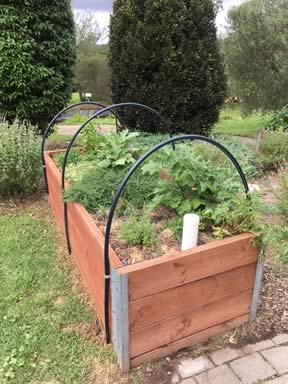
Wicking beds are self watering garden beds.
A wicking bed has a water reservoir that sits underneath the soil your vegies grow in.
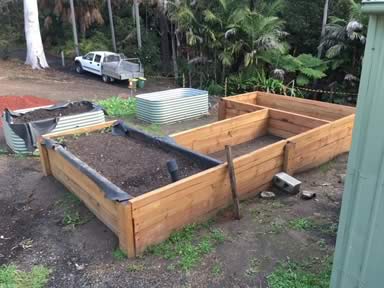
To create a wicking bed you need a waterproof container or a garden bed frame that can be made waterproof. Wicking beds can be created in corrugated metal beds, wine barrels, large fruit crates, plastic tubs, build with hardwood timber sleepers or untreated golden cypress timber sleepers.
If the container isn’t waterproof it will need lining. Lining materials include builders plastic or polyethylene that is 0.5mm thick. Old carpet or thick sheets of cardboard can be placed underneath garden bed which will help prevent punctures.
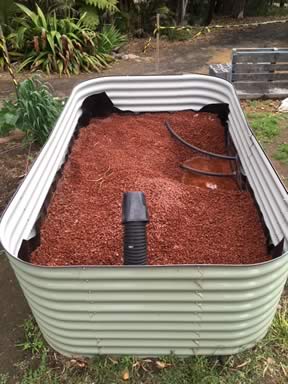
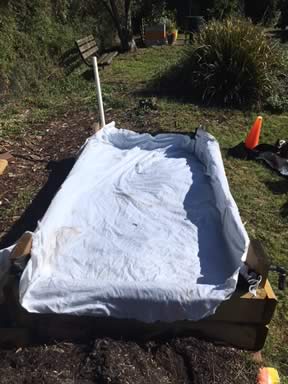
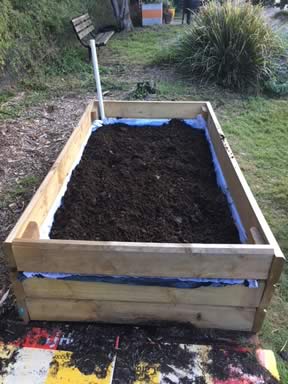
The bottom section of the garden bed (the reservoir) is filled with pebbles like scoria or blue metal. Then geotextile fabric is placed on top of the pebbles. This is the barrier between the reservoir and the top area of soil. The geotextile fabric allows water to penetrate and this results in capillary action, watering from the bottom up. The fabric will stop the soil from filtering into the reservoir.
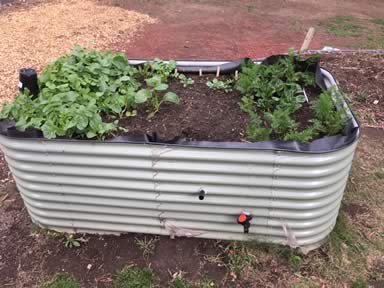
A pipe is setup at the top of the bed and this pipe passes down into the bottom reservoir. This is how water is filled into the wicking bed. Also a hole is drilled into the side of the wicking bed where the reservoir and soil meet. A pipe is fitted into hole and this becomes the overflow pipe. Thus water then does not saturate the soil section. Capillary action will water the vegies.
For additional information:
- See Gardening Australia web site, for more information on Wicking beds.
- See Very Edible Gardens website, on Wicking beds.
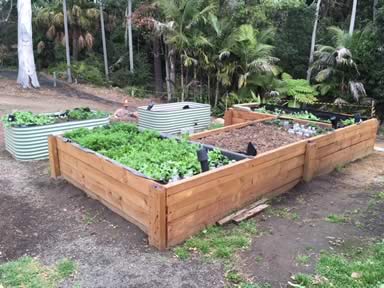
Photos of wicking beds are from Edgeworth David community garden and the Fagan park eco garden..
